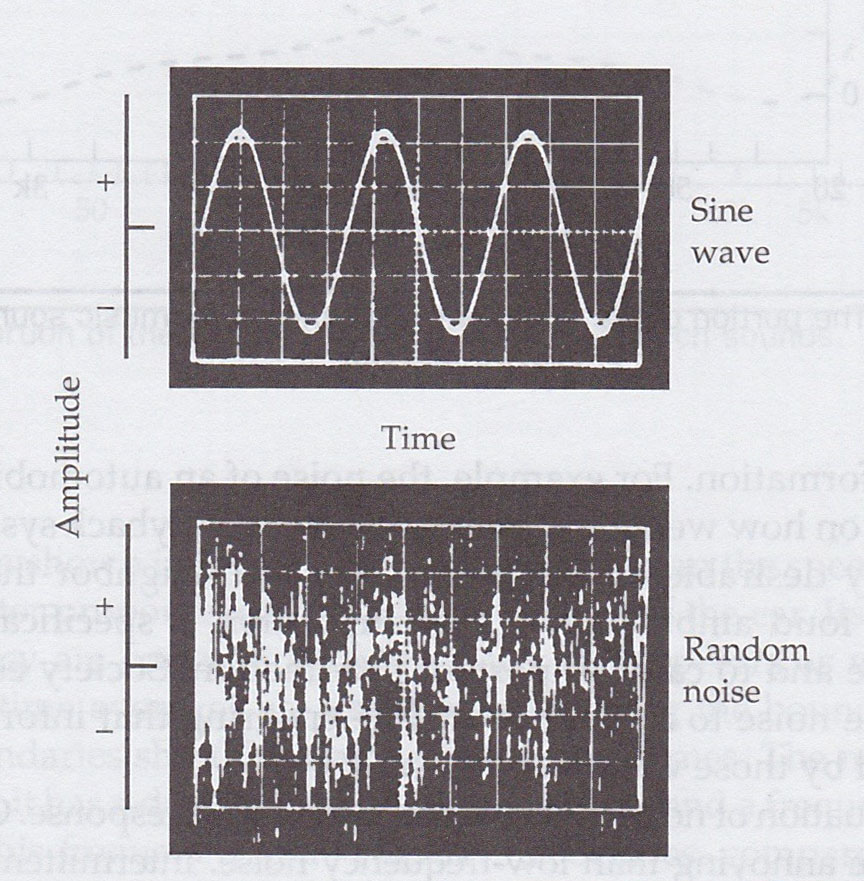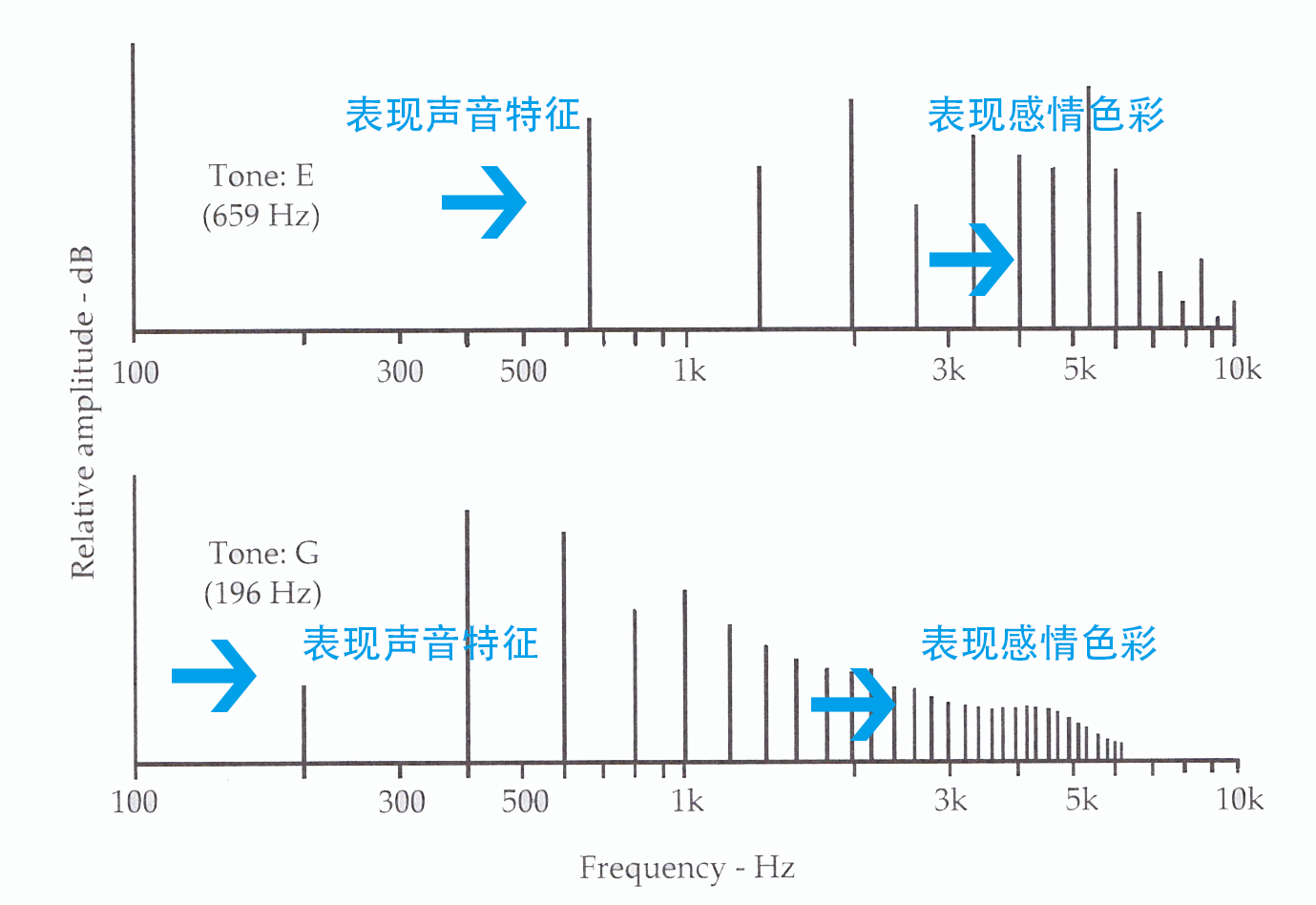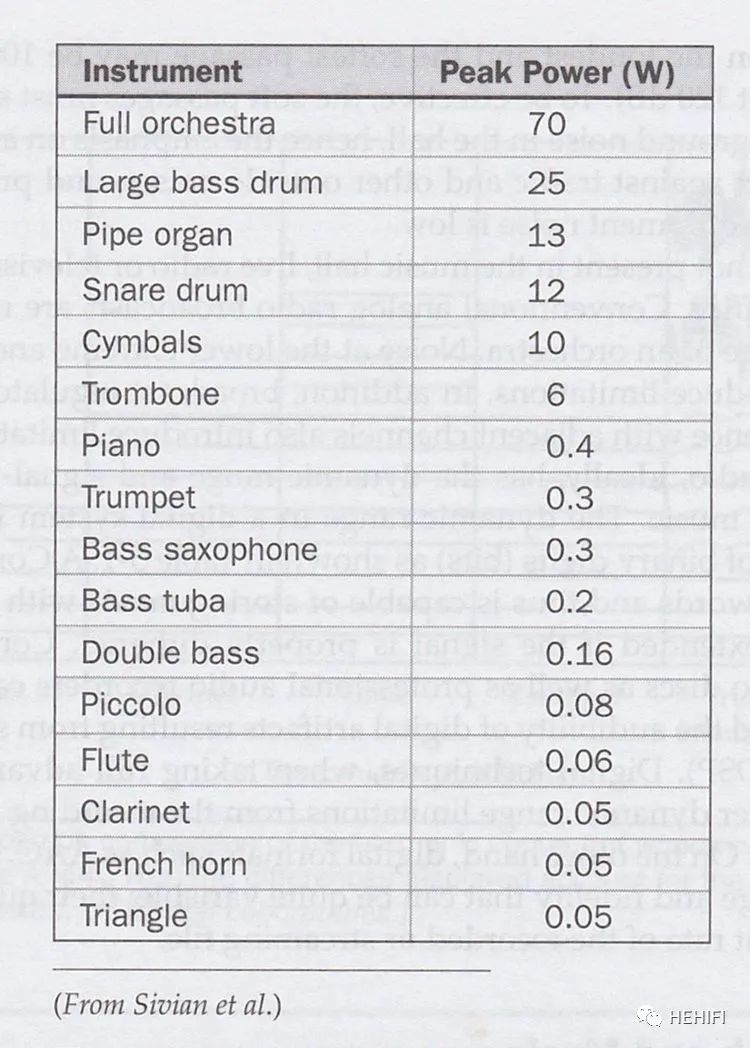What is the impact of noise (or noise)? Is it as low as possible? Is the requirement of low noise very important? On the noise problem of HIFI amplifier, we may have different understanding, sort out this problem, hope to share and discuss with you.
I. some views on noise
Many friends think that HIFI amplifier low noise is very important, and some friends may not see it that way. First of all, let's take a look at some of the following ideas:
1) while listening to the music, I didn't hear any noise, so there was no problem.
2) the bottom noise is so clean that it will feel unreal. Proper noise can increase the sense of scene.
3) low noise will lead to excessive expression of the details of music, affecting the sense of listening and listening to music.
4) low noise will expose the shortcomings of the amplifier and affect the feeling of listening to music.
5) the influence of noise in music is the same as that produced by amplifier.
6) low noise can make the background quieter, but will not change the musical expression of the work.
7) the signal-to-noise ratio of the amplifier meets the requirements, and no matter how low the noise is, there is little significance.
8) too much pursuit of low noise will lead to the deviation of listening concept, too much pursuit of parameters and deviation from art.
9) the masking effect of the sound, the music covers the noise over the noise, and the loud noise will not affect the music appreciation.
So, are these views correct?
II. Noise and sources
Let's review the noise and the main sources.
Noise has the characteristics of random and continuous, for some sudden but not continuous signals (except the signals to be transmitted), it is sometimes called interference sound. Here, we will only talk about noise.
The following figure shows a waveform of noise and a comparison with the waveform of an AC sine signal.
Figure 1. Comparison of noise and sine wave waveforms, extracted from "Master Handbook of Acoustics,Sixth E"dition",F.Alton Everest and Ken C. Pohlmann

For HIFI amplifiers, noise is any or all of the signals other than the music and voice signals you want to transmit (except interference). Where does the noise come from? Here are some possible ways:
1) the noise contained in musical works
Music works will bring noise in the process of recording, such as the background sound in the recording studio, the sound of air conditioning, the noise generated by equipment, and so on.
2) noise generated by the amplifier
There are many ways for amplifiers to receive and generate noise, and the mechanism is very complex. The main noise are the noise of resistive elements (Johnson noise), the noise produced by semiconductor components, the ripple sound produced by AC power supply (also known as alternating current or hum), the noise produced by various mixed signals transmitted by the power grid, the noise caused by external radio wave interference or electromagnetic induction, the noise caused by the unstable operation of the amplifier itself (such as self-excited oscillation), the noise caused by the vibration of devices (such as transformers), and so on. We will not discuss the effects of amplifier distortion here.
3) noise from front-end equipment
The front-end equipment will also bring some noise, such as the noise produced by the output resistance of the front-end equipment, the noise produced when the front-end equipment amplifies and transmits the signal, the interference sound received by the connecting line, the loop hum formed by the power supply and the ground, and so on.
4) noise generated by the environment
The noise generated by the surrounding environment, such as the sound of air conditioning, the sound of computer fans, other sounds from the outside, and so on.
Third, signal
We might as well call the audio signal of instrumental music or human voice that we want to transmit and amplify as "signal" to distinguish it from the above-mentioned "noise" and "interference sound". Let's review the basic characteristics of the signal.
Figure 2. The frequency spectrum of the violin with E and G sounds, extracted from "Master Handbook of Acoustics,Sixth Edition", F.Alton Everest and Ken C. Pohlmann

As can be seen from the above picture, when the strings of the violin produce E (659Hz) and G (196Hz) respectively, they also produce many harmonics (or overtones) in addition to the fundamental frequency. In fact, the range of frequencies at which a violin can produce sound (also the frequency of the fundamental wave) is 196~3136Hz, while the frequency range of harmonics can be as high as 4~15kHz (excerpt: practical recording Technology, sixth Edition, Bruce Bartlett, Jenny Bartlett, translated by Zhu Weizhong).
This is an example of the violin, and the same is true of other instruments and voices (the overtones of some special instruments, such as drums, bells, pianos, etc., are not harmonics that are multiple to the fundamental frequency).
Two basic characteristics of sound
We can sum up the following conclusions:
1) the sound signal is made up of fundamental waves and many small harmonics (or overtones) of different sizes.
There are many harmonics and their amplitudes vary greatly, which is generally much smaller than that of their fundamental waves, and tends to decrease with the increase of the order of harmonics, that is, the higher the harmonic frequency, the smaller the amplitude.
2) harmonics (or overtones) reflect the characteristics and timbre of instrumental music or human voice.
It is the combination of different harmonics used to distinguish one instrument from another (such as a violin rather than a trumpet), or the different timbre of the same instrument.
It should be noted that, compared with a performer playing different violins, there will be different timbre, and different performers playing the same violin will also have different timbre, the reason is also due to the change of harmonics.
Fourth, the influence of noise on sound
How does noise affect sound? In the most intuitive case, as shown in the following figure, the signal changes with the addition of noise.
Figure 3. Analog signal with noise, excerpted from "Digital Interface Handbook, Third Edition", Francis Rumsey, John Watkinson

This is a familiar situation. Obviously, the signal is polluted by noise. How serious is the problem?. Maybe it doesn't mean anything. Let's do some analysis.
1. From the perspective of spectrum
Take a look at the following picture first:
The local waveform of the noise in figure 4 and figure 1. From "Master Handbook of Acoustics,Sixth Edition", F.Alton Everest and Ken C. Pohlmann

The waveform of noise seems to have no clear regularity, so it is difficult to analyze quantitatively with theoretical (mathematical) tools. In order to make a qualitative analysis, we make some approximate assumptions, especially when the noise contains alternating sound (the alternating sound is periodic), we assume that the waveform of noise is a periodic non-sinusoidal wave, or a combination of periodic non-sinusoidal waves. In this way, we can use the theory of Fourier series to do further analysis.
Fourier series means that any periodic non-sinusoidal wave can be decomposed into the sum of a series of sinusoidal quantities of different frequencies.
In that case, any noise, like the sound of the violin above, can be decomposed and seen as a combination of sine waves of many different frequencies. The following figure is an example of the noise spectrum.
Fig. 5. Spectrum diagram of a kind of noise, excerpted from: network

Take the violin above as an example, add the spectrum of the violin and the spectrum of noise together, and you get a new spectrum, which is a different spectrum that has been changed. According to the analysis of the two basic characteristics of the above sound, the sound characteristics and timbre of the violin will change.
This is the case with the violin, and other sounds are the same or similar.
However, there is a premise that the spectral amplitude of the noise is meaningful relative to the amplitude of the signal, that is, the amplitude of the noise can not be ignored.
2. From the perspective of amplitude
Let's look at how noise affects sound from the point of view of amplitude.
1) signal to noise ratio
Signal-to-noise ratio (SNR) is a performance index measured by amplitude. To put it simply, the ratio of the output voltage (usually the maximum undistorted output voltage) under the rated input and output conditions of the amplifier to the output voltage with an input EMF of 00:00 (that is, noise voltage) is calculated. The formula is:
Signal to noise ratio = 20Log (maximum undistorted output voltage / noise voltage) in decibels (dB)
According to the national standard "minimum performance requirements of GB/T 14200-93 High Fidelity Audio Amplifier", the minimum requirements of signal-to-noise ratio (unweighted) are: pre-amplifier and combined amplifier 58dB, post-stage amplifier 81dB.
Here, when measuring the signal-to-noise ratio, there are the following situations:
A. the amplifier works in the state of maximum undistorted output.
This is the maximum working state of the amplifier limited by distortion (the distortion index meets the standard or the data provided by the factory, without clipping), that is, the volume potentiometer knob is turned clockwise to the maximum position that does not cause distortion.
B. the electromotive force of the input signal is rated (when measuring the maximum output voltage)
According to the requirements of the national standard GB/T14197-2012 preferred matching value for the interconnection of audio, video and audio-visual systems, the minimum source EMF of the input signal of the access power amplifier is not less than 1V. However, the overload source EMF of the power amplifier specified in the national standard "minimum performance requirements of GB/T 14200-93 high fidelity audio amplifier" is not less than 2V. Basically, the value of the source electromotive force can be approximately regarded as the value of the signal voltage, that is to say, the rated input signal voltage must be greater than 1V, how much can it be, depending on the input overload capacity of the amplifier. generally, it must be able to withstand 2V input signal voltage. In fact, the analog output voltage of a general CD player is 2V effective value (RMS), and some decoders output a higher 4V effective value (RMS) voltage.
C. The frequency of the input signal is a single frequency.
The measurement of signal-to-noise ratio does not require the input signal to simulate the actual music signal, that is, there is a combination of fundamental and harmonic, but generally the sine wave with a specified frequency of 1KHz is used as the measurement input signal.
2) will there be no problem if the signal-to-noise ratio reaches the standard?
The signal-to-noise ratio reflects the performance level of the amplifier, but it still cannot prevent the following situations:
A, do not work at the maximum output position
Unlike when measuring, in reality, no one (or almost no one) listens to music at maximum output, but often listens to music near the smallest (and sometimes attenuated) work position. When the working state changes to a smaller direction, the output voltage corresponding to the signal decreases accordingly, because the noise is generated by the synthesis of the whole circuit of the amplifier, so the noise will not be reduced in the same proportion (especially when the AC hum is dominant in the noise, the hum often does not decrease with the decrease of the volume, but sometimes increases).
Therefore, in the actual working conditions (the vast majority of cases), the signal-to-noise ratio performance of the amplifier can not be guaranteed.
B, do not work in a position with zero volume
Similarly, in reality, no one enjoys music at zero volume. That is, the input signal must be amplified (sometimes attenuated) to a certain extent (it is generally believed that the 85dB sound pressure level is more suitable for listening to music), so that the noise of the input is also amplified (or transmitted) to a certain extent.
C. The input signal is not a single frequency and the amplitude is not rated.
In reality, there is no way to guarantee that all input signals can be maintained at the rating, especially the many harmonics (or overtones) contained in the audio signal mentioned above. So, the question is, can you be sure how small a weak audio signal or harmonic will be? I don't think so.
In this way, what will be the result of the superposition of a certain degree of noise and small signals or harmonics (or overtones) that are uncertain (though also amplified)? Some parts of the sound signal are changed or submerged by noise, and the sound will change.
The table below can be further explained. As shown in the table, there is a huge difference in the strength (or signal amplitude) of different sounds in a band.
Table 1. Maximum power peaks of various instruments when the symphony orchestra performs live. Excerpts from "Master Handbook of Acoustics, Sixth Edition", F.Alton Everest and Ken C. Pohlmann
We may wish to calculate that based on the rated input signal voltage of 2V to correspond to the overall band of 70W, the input signal voltage corresponding to the maximum peak value of the minimum power instrument will only have an effective value of 53mV. At this time, the signal-to-noise ratio has dropped by 31dB, and the minimum performance indicators required by the previous national standard have actually dropped to 27dB and 50dB respectively. If the actual value (non-maximum peak value, non-maximum output state) is calculated and the impact on harmonics is considered, the actual signal-to-noise ratio will be reduced more significantly. It can be seen that in music signals, the useful signal amplitude can be very small (can be as low as the sound pressure level level of the auditory threshold), and the actual signal-to-noise ratio can also be very low.
5. Under what circumstances can the impact of noise be ignored?
In both cases, the impact of noise should be negligible.
1) The absolute sound pressure level of the noise (after amplification) is below the auditory threshold; or
2) According to the 1/3 principle, the amplitude of noise is more than 2/3 less than the amplitude of signals of the same frequency. In other words, the amplitude at each frequency in the noise spectrum is more than 2/3 less than the amplitude at the same (or similar) frequency in the signal spectrum, and no new harmonics appear.
However, in either case, the conditions to be met are very strict.
VI. Conclusion
Through the above analysis, noise has a great impact on sound. Is this impact harmful, or can it sometimes be beneficial?
For noise in musical works, sound engineers may allow or add some noise from an artistic perspective as part of their artistic creation.
For amplifiers, noise can only change or drown out some details in the musical work, making the reproduced work no longer real. These details are indispensable for HIFI amplifiers, especially high-end HIFI (these details are important elements in confirming whether it is a high-end HIFI).
Do you now have clear answers to some of the questions and opinions mentioned at the beginning of this article?
2017.05.30








